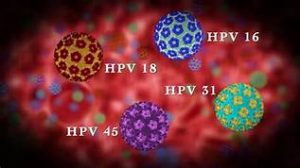
About 50% of new genital HPV infections occur in 15 to 24 year-olds. For most people, HPV clears on its own. For others who don’t clear the virus, it could cause certain cancers and other diseases. More than 40 genital types of human papillomavirus (HPV) exist, only certain types can cause HPV-related cancers and diseases in both males and females. By getting the facts now, you can have an informed conversation with your child’s doctor or health care professional. Together, you can talk about HPV and decide the best way to help protect your child. Your child’s doctor or health care professional may talk to you about the HPV vaccination.
The Centers for Disease Control and Prevention (CDC) recommends routine HPV vaccination for both boys and girls at age 11 or 12. While 11 and 12 are the recommended ages for routine vaccination, females who are 13-26 and males who are 13-21, may still be able to catch up and receive HPV vaccination. Talk to your child’s doctor to help determine when the time is right. Remember, your child may not be at risk for HPV now, but the risk increases as they get older. Exposure can happen through any type of genital contact with someone who has HPV. So, even though intercourse is the most common way to get the virus, it isn’t necessary for exposure.
When the time is right, you can talk to your son or daughter about some of these other ways to help protect against HPV-related cancers and diseases. Having an open and honest conversation can help educate your child about infection with the virus and its potentially serious consequences.
- Using condoms – Condoms may lower the risk of getting HPV if used all the time and in the right way. But keep in mind that the virus can affect areas that aren’t covered by a condom — so it may not fully protect against HPV.
- Limiting sexual partners – While there’s no way to know whether your partner could expose you to HPV, limiting your number of sexual partners may help lower your chances of getting the virus.
- Practicing abstinence – According to the CDC, the most reliable way to prevent genital HPV infection is abstaining from sexual activity.
Cervical Cancer
Virtually all cases of cervical cancer are caused by HPV. Unlike some other cancers, cervical cancer doesn’t run in the family. It’s caused by certain types of HPV. If a woman has an infection from certain types of HPV and the infection doesn’t go away on its own, abnormal cells can develop in her cervix (the lower part of the uterus that connects to the vagina). Every year in the United States, HPV causes about 12,900 new cases of cervical cancer. That’s about 35 women diagnosed each day. If these abnormal cells aren’t found through routine cervical cancer screening and treated, cervical cancer can develop. That’s why it’s important for women to get regular screenings. Many women with cervical cancer were probably exposed to cancer-causing HPV types in their teens and 20s. In fact, women in their teens and 20s may be more vulnerable to certain infections than older women. That’s why it’s important for parents to talk to their child’s doctor before their child becomes sexually active.
Vaginal and Vulvar Cancers
Certain types of HPV may cause these gynecologic cancers. Vaginal cancer occurs in the woman’s birth canal, which connects the bottom of the uterus to the outside of her body. This type of cancer usually has no symptoms early on. However, when symptoms occur, they include pain in the pelvis, abnormal vaginal discharge or bleeding, or blood in the urine or stool. Unlike vaginal cancer, vulvar cancer usually has symptoms. They include pain in the pelvis, color and skin changes, sores or lumps, itching, burning, and bleeding on the vulva (outer part of a woman’s genital organs). While not all vaginal and vulvar cancer cases are caused by HPV, in the United States each year, about 4,500 women are diagnosed with vaginal or vulvar cancer caused by HPV. Treatment for these types of cancer is most effective when the cancer is caught early on.
Genital Warts
Genital warts are easily spread and can affect both males and females. The warts are usually flesh-colored growths that may be raised or flat, single or multiple, small or large. But you may not be able to recognize them since not all genital warts look the same. About 3 out of 4 people will get genital warts after having any kind of genital contact with someone who has genital warts. This disease can be treated, but there’s no cure for the HPV infection that caused it. Treatment can also be painful (for example, freezing or applying medicine to the warts). Even after treatment, genital warts can come back — about 25% of the time, they return within 3 months. Every hour, there are ~40 new cases of genital warts in the United States.
Anal Cancer
Both males and females can be at risk for HPV-related anal cancer. Anal cancer rates have been increasing in the United States for both males and females. While not all anal cancer cases are caused by HPV, each year nationwide, there are about 6,300 new anal cancer cases that are caused by HPV. This type of cancer occurs in the anus, which is the opening at the lower end of the intestines (bowels). Although anal cancer can sometimes have no symptoms, minor rectal bleeding is usually the first sign.
To learn more about the consequences of HPV, ask your doctor or health care professional. Together, you can decide the best way to help protect against certain HPV-related cancers and diseases.




